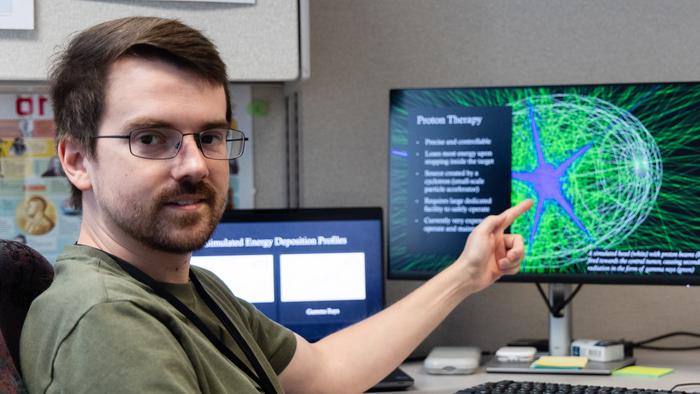Researchers at Jefferson Lab are investigating whether proton therapy could replace radioactive isotope-based cancer treatments, potentially reducing radiological risks.
Summary: A team at the Thomas Jefferson National Accelerator Facility is launching a study to evaluate proton therapy as a safer alternative to traditional radioisotope-based cancer treatments. The research aims to address radiological safety concerns while maintaining effective cancer treatment outcomes.
Estimated reading time: 4 minutes
The U.S. Department of Energy’s Thomas Jefferson National Accelerator Facility (Jefferson Lab) is embarking on a new study to assess the potential of proton therapy as a safer alternative to conventional radioisotope-based cancer treatments. This research, funded by the DOE National Nuclear Security Administration’s Office of Radiological Security (ORS), seeks to minimize radiological risks associated with current treatments while maintaining or improving therapeutic efficacy.
Proton Therapy vs. Radioisotope Treatments
Proton therapy and radioisotope-based treatments are both forms of external beam radiotherapy, used to deliver radiation to internal organs for cancer treatment. While radioisotope treatments using sources like cobalt-60 are more common and less expensive to implement, they come with inherent radiological safety concerns.
Proton therapy, on the other hand, offers several key advantages:
- More precise energy deposition, particularly beneficial for tumors near sensitive tissues
- Rapid on/off capability of the radiation source
- Reduced risk of radiological hazards
However, proton therapy facilities are significantly more complex and expensive to build and operate, requiring particle accelerators and specialized equipment.
The Jefferson Lab Study
Cameron Clarke, a staff scientist at Jefferson Lab, is leading this important research. He explains the significance of the project:
“As an early-career scientist who has just joined the lab as a staff member working explicitly to further the BRIC initiative, I am very excited to have received this green light from the DOE. I am also excited about how the genesis of this project reflects the effectiveness of the labwide collaborative approach that BRIC is aiming to facilitate, and I can’t wait to continue to pursue those connections as I dive into the study.”
The study, running through fiscal year 2025, will:
- Survey current state-of-the-art technologies in proton therapy
- Assess practical barriers to replacing radioisotope-based radiotherapy
- Acquire a proton therapy-capable computer treatment planning system
- Simulate relative cancer treatment performance capabilities
This research builds on Jefferson Lab’s existing collaborations with the Hampton University Proton Cancer Institute (HUPCI) and other clinical partners.
Potential Impact and Future Directions
The outcomes of this study could have far-reaching implications for cancer treatment practices. If proton therapy proves to be a viable and safer alternative to radioisotope-based treatments, it could lead to:
- Reduced radiological risks in cancer treatment facilities
- Improved treatment outcomes, especially for cancers near sensitive tissues
- Advancements in proton therapy technology, potentially making it more accessible
While the research is still in its early stages, it represents an important step towards safer and more effective cancer treatments.
Quiz: Test Your Knowledge
- What is the main advantage of proton therapy over radioisotope-based treatments?
- Who is funding the Jefferson Lab study on proton therapy?
- What is one of the main challenges associated with implementing proton therapy?
Answers:
- Proton therapy offers more precise energy deposition and reduced risk of radiological hazards.
- The DOE National Nuclear Security Administration’s Office of Radiological Security (ORS).
- Proton therapy facilities are significantly more complex and expensive to build and operate.
Glossary of Terms
- Proton Therapy: A form of radiation therapy using a beam of protons to target cancer cells.
- Radioisotope: An unstable form of a chemical element that emits radiation as it decays.
- External Beam Radiotherapy: The use of external radiation to pass through the body and deposit energy to internal organs for cancer treatment.
- Particle Accelerator: A machine that uses electromagnetic fields to propel charged particles to high speeds.
- BRIC: Biomedical Research & Innovation Center at Jefferson Lab.
- Gantry: A large, rotating structure used in proton therapy to allow treatment from multiple angles.
For more information, visit the Jefferson Lab Biomedical Research & Innovation Center.
Enjoy this story? Get our newsletter! https://scienceblog.substack.com/


